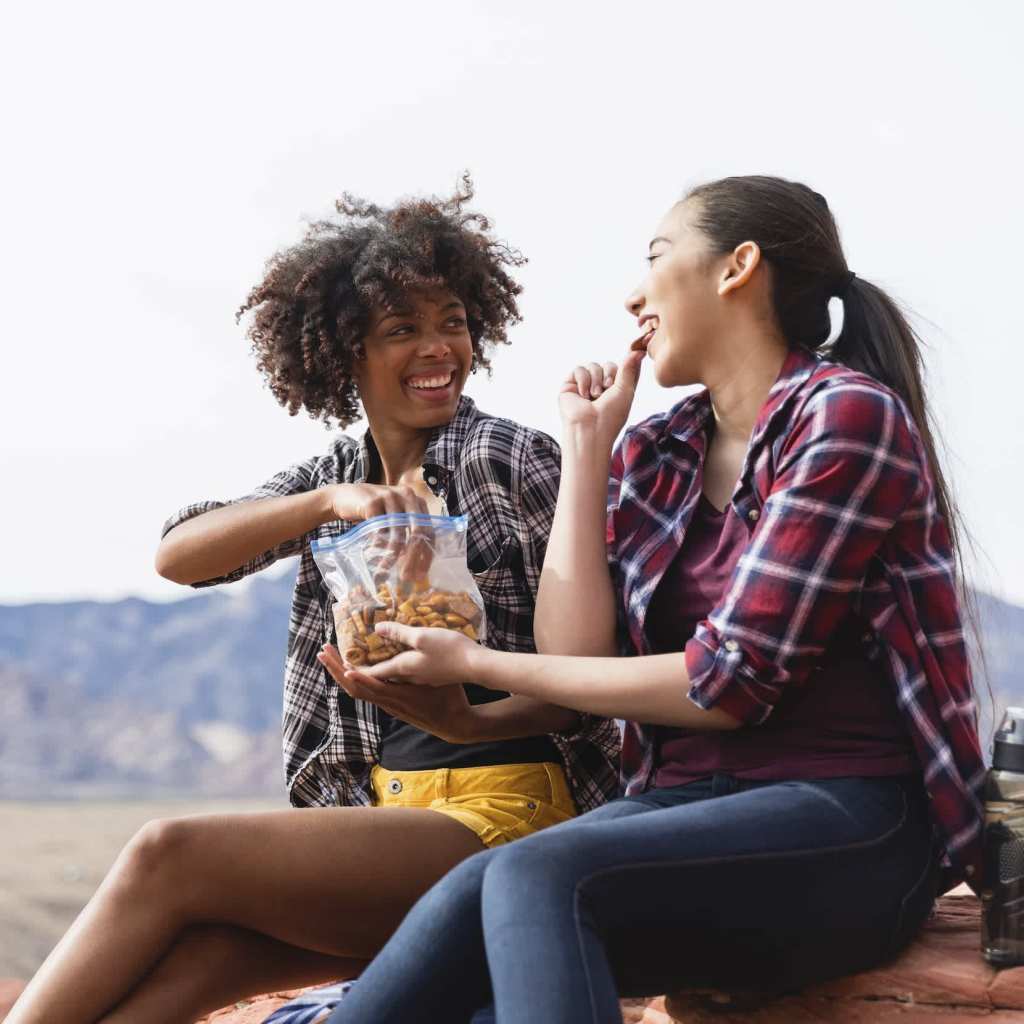After reaching for a mashed banana at the bottom of my backpack too many times to count, I’ve finally realized I need a lesson in snack packing on hikes (and probably some tips on packing in general).
For expert tips on what foods to stock up on and what to eat before hitting the trails, I turned to Emily Davenport, a wilderness guide with Appalachian Mountain Club.
Let’s start with before the hike begins – most likely breakfast. I’ve always chosen to eat a big breakfast of foods I know won’t bother my stomach, and my intuition wasn’t necessarily wrong.
“For me, I like to eat a little something before a hike, just to get the fuel going, but nothing too heavy or filling,” Davenport says. “I’ve seen others prefer to eat a big breakfast or lunch, cramming in those calories when they can, so it really comes down to personal preference and what works best for the individual.”
As you do more hiking, Davenport says you’ll be able to figure out what’s right for you, but be sure to listen to your body all along the way and follow any instructions from your doctor on your personal health.
Related: 10 Leggings to Wear on Your Next Day Hike
Your breakfast might also change based on how strenuous or the mileage of your hike. On more difficult hikes or during longer distances, Davenport turns to oatmeal with brown sugar and maple syrup. “It’s easy on my stomach but gives me a good starting energy for the day, without being overly heavy or filling.” Other go-tos for Davenport are eggs, yogurt, granola, or toast. “Any kind of food that gives me carbs and sugars without being too upsetting for the stomach. But again, this is just my personal preference. I know others who prefer the hearty buffet breakfast that packs in the sugars, proteins, carbs, and calories.”
Now, on to snacks, which Davenport always recommends bringing more than you think you’ll need.
While Davenport will bring a sandwich for a long day hiking, she prefers small snack breaks throughout the entire hike. “This is especially helpful on cold winter hikes – snacking helps keep my body warm and fueled even when the cold zaps those extra calories.”
Trail mix (with salty snacks, nuts, and chocolate), granola, and candy, like Snickers and M&Ms, make Davenport’s list. “There are lots of energy bars out on the market that I also love, but I like to bring more than just bars, for variety – and also feels better on the stomach. I know a lot of people who really like energy gels and “goo”, which gives efficient energy. If I’m out on a really physically exerting hike, I’ll add in those efficient energy options, but otherwise I try to stick with more natural food.”
Davenport knows others who love to bring fresh fruit, like apples and oranges, veggies with hummus, and cheese, too – so again, it’s about personal preference. Of course, doing the right prep before embarking on a hike is key for being properly prepared, so have a clear understanding of your trail and its difficulty level to avoid any injuries.
Click here for more health and wellness stories, tips, and news.

